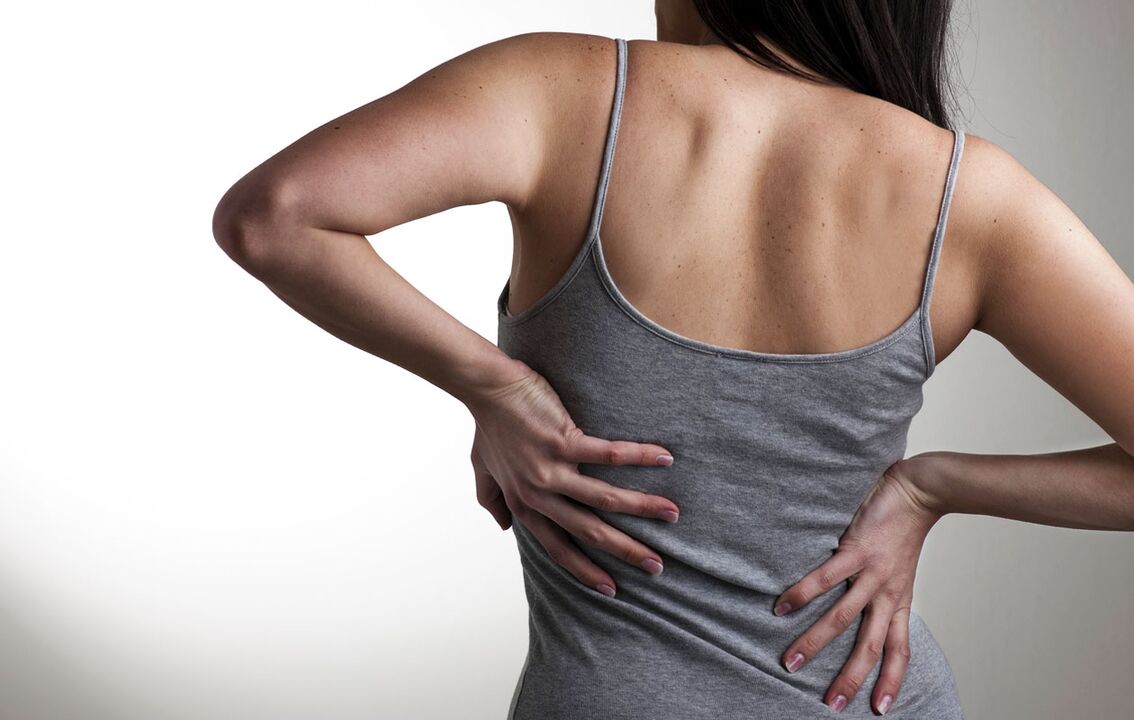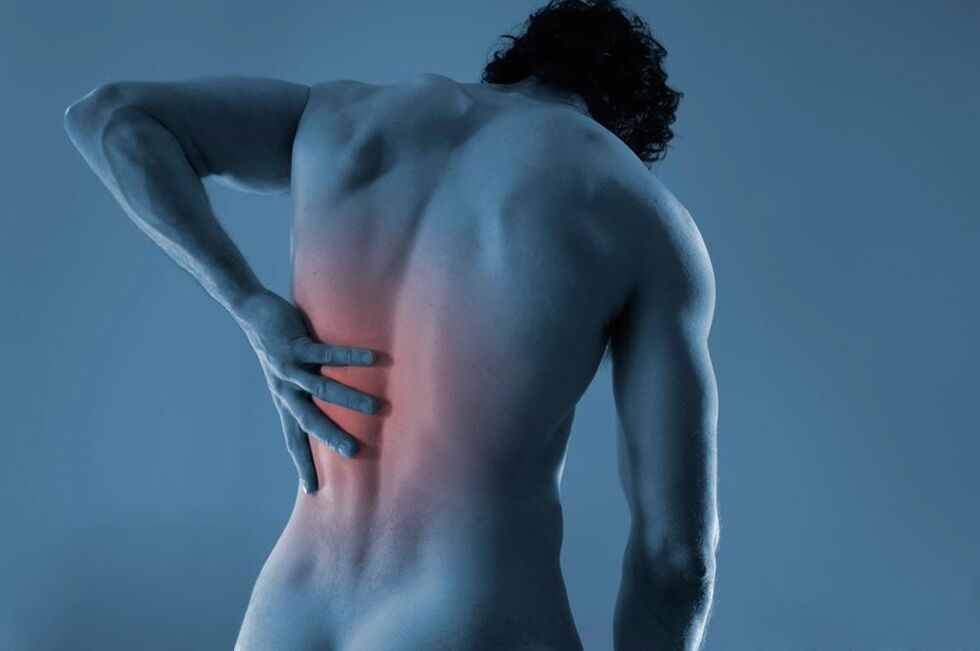Osteochondrosis of the chest region is rare, symptoms of damage to the neck and lumbar region are more common. Breast osteochondrosis poses a threat to human health. Due to the peculiarities of the structure of the breast, diagnosis is difficult in view of the symptoms of breast osteochondrosis, so that the patient learns of the disease at a late stage.
The chest is immobile like other parts of the spine. The sternum is not under constant strain. Factors explain the moment when the disease does not have pronounced symptoms at the initial stage. The chest has a complex structure, the immobility of the chest region is related to the structure of the spine. The combination of the spine and ribs provides a reliable, durable structure that will withstand injury.

Osteochondrosis of the chest develops with a slight displacement of the vertebrae that occurs under the influence of stress. Osteochondrosis won't keep you waiting when a person has a curvature of posture or spine. The development of osteochondrosis is not as noticeable as in other parts of the spine, it reaches a difficult stage, symptoms appear in the neck, lower back, similar to the manifestations of the disease.
Causes of pain
Painful sensations do not arise for no reason. Pain syndrome is a vivid symptom of the disease. When osteochondrosis develops, the chest hurts. Pain manifestations occur when a person has a deformity of the intervertebral discs. This means their thinning, bulging, the formation of intervertebral hernias. Pain cannot be avoided with joint changes. We are talking about the formation of osteophytes, the destruction of cartilage tissue.
Late visits to the doctor, refusal to go to the hospital, lack of treatment, improper implementation, threatens a person with radiculopathy. The medical term refers to the compression of the nerve roots in the spinal cord. Compression of the spinal cord should be attributed. The possibility of a spinal cord injury is not excluded.
Pain syndrome
No matter how difficult it is to diagnose the disease, it will manifest itself. In the first stages of the development of osteochondrosis, it is difficult to recognize the symptoms, at a difficult stage they do not hide their presence. The symptoms of thoracic osteochondrosis are conventionally divided into two groups. The first is pain, the second is neurological manifestations.
The pain syndrome manifests itself in two forms: dorsago, dorsalgia. Often the pain is localized in the upper back, hidden between the ribs. It often happens when a person experiences severe girdle pain between the ribs during body movements, turns, coughing, and deep breathing.
Attacks of thoracic osteochondrosis are confused with heart disease. The fault is a lot of autonomic nerve fibers that are located in the chest region. Thanks to them, the manifestations of osteochondrosis are similar to the symptoms of heart disease: pain in the left side of the sternum, development of an inflammatory process in the gallbladder. It is possible that simulants of gastric diseases may appear - symptoms similar to those of an ulcer, gastritis.
Neurological symptoms

Thoracic osteochondrosis has a group of neurological symptoms:
- Numbness, flattening of the lower extremities;
- Numbness of the chest;
- Numbness of the abdomen, pelvis;
- Reflex tension of the muscle corset in the back, chest;
- Violation of potency;
- Disorder of the genitals, pelvic organs.
Complications of thoracic osteochondrosis are not excluded, one of which is considered shingles. It is important to identify the disease at an early stage in its development. The symptomatology of the disease is extensive, uncharacteristic, there is a high risk of misidentifying the disease.
sign
The disease has symptoms. Among the signs, the appearance of numbness in parts of the body is noted.
The person begins to tickle (the appearance of goose bumps). With thoracic osteochondrosis, a strong, local drop in temperature in the lower extremities is possible. Osteochondrosis is often accompanied by irritation, burning, and itching.
Osteochondrosis is characterized by increased nail fragility. If an unhealthy skin condition occurs, peeling is possible, especially on the face. Signs are associated with vascular dysfunction. Another sign is a failure of the gastrointestinal tract system, as a result of which a person suffering from osteochondrosis often experiences indigestion and gas.
Dorsago
Diagnosis of thoracic osteochondrosis begins with the identification of the main symptoms of the disease - vertebral syndromes: dorsago, dorsalgia.
Dorsago is an acute pain of a sudden nature that manifests itself in the sternum region. Often times, the syndrome affects people who lead a sedentary lifestyle, whose job is to sit at work 8 hours a day and sit in front of a computer. It should be attributed to drivers who rarely leave the place near the steering wheel of the car.
Dorsago is called "chest lumbago" because it hits the area between the shoulder blades hard, unexpectedly, as if a knife were stuck. The onset of the syndrome is often accompanied by shortness of breath. Dorsago is confused with myocardial infarction. Treatment of the disease should be started earlier, otherwise it will not be difficult to confuse the disease. Improper treatment leads to complex consequences of thoracic osteochondrosis.
Dorsalgia
Dorsalgia syndrome manifests at a slower pace and torments the patient for 3 weeks. The syndrome is easy to identify, it consists in weak pain sensations in the inflamed area. Manifestations cause discomfort in a person, urging him to go to the hospital for help. With dorsalgia, the following are possible:
- An increase in pain intensity with a deep breath, cough;
- Muscle strain;
- Decreased motor activity in the neck, lower back;
- The appearance of muscle spasms;
- An increase in pain intensity at night with physical activity.
There are two types of dorsalgia - upper, lower. In the case of the upper, the main area of the lesion is located in the upper part of the sternum (in the neck area), the second option is characterized by pain in the lumbar region and sacrum.
It is important not to confuse the manifestations of dorsalgia with the onset of pneumonia; the manifestations are similar, improper treatment will aggravate the situation. Osteochondrosis during breastfeeding is manifested by such symptoms, treatment should be carried out carefully under the supervision of a doctor. Taking medication is selected on the basis of acceptable, it is unacceptable to endanger your health and the health of the child.







































